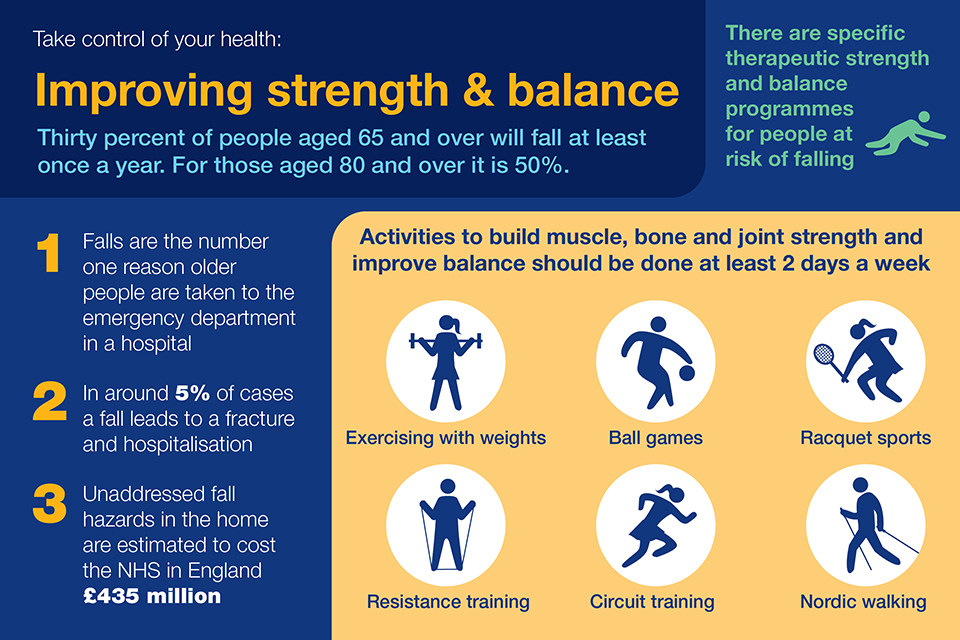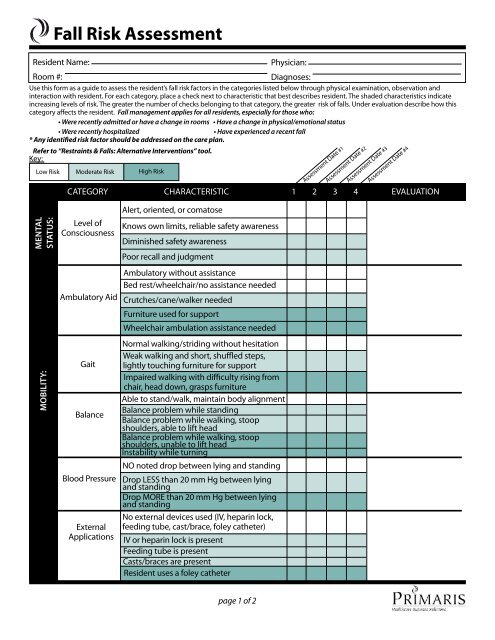Some Known Questions About Dementia Fall Risk.
The Main Principles Of Dementia Fall Risk
Table of ContentsExamine This Report on Dementia Fall RiskHow Dementia Fall Risk can Save You Time, Stress, and Money.The Facts About Dementia Fall Risk RevealedExcitement About Dementia Fall Risk
A fall risk assessment checks to see exactly how most likely it is that you will fall. The analysis typically includes: This consists of a series of concerns about your overall health and wellness and if you've had previous falls or issues with equilibrium, standing, and/or walking.Interventions are suggestions that might reduce your risk of falling. STEADI consists of 3 actions: you for your danger of falling for your risk aspects that can be improved to attempt to avoid drops (for instance, equilibrium troubles, impaired vision) to decrease your danger of falling by making use of efficient strategies (for example, giving education and sources), you may be asked several inquiries consisting of: Have you dropped in the previous year? Are you stressed about falling?
You'll rest down once more. Your company will certainly check for how long it takes you to do this. If it takes you 12 secs or even more, it may indicate you go to higher risk for an autumn. This test checks strength and balance. You'll being in a chair with your arms went across over your upper body.
The settings will get more difficult as you go. Stand with your feet side-by-side. Move one foot halfway onward, so the instep is touching the huge toe of your various other foot. Relocate one foot totally before the various other, so the toes are touching the heel of your other foot.
Dementia Fall Risk Fundamentals Explained
The majority of drops take place as an outcome of several adding factors; as a result, taking care of the risk of dropping starts with determining the variables that add to fall threat - Dementia Fall Risk. Several of the most pertinent threat elements consist of: History of prior fallsChronic medical conditionsAcute illnessImpaired gait and balance, lower extremity weaknessCognitive impairmentChanges in visionCertain risky medications and polypharmacyEnvironmental factors can additionally increase the risk for falls, including: Poor lightingUneven or harmed flooringWet or unsafe floorsMissing or harmed handrails and get barsDamaged or incorrectly fitted tools, such as beds, wheelchairs, or walkersImproper use assistive devicesInadequate supervision of the individuals living in the NF, consisting of those who show hostile behaviorsA successful loss risk administration program calls for a complete professional assessment, with input from all members of the interdisciplinary team

The treatment strategy should additionally consist of interventions that are system-based, such as those that advertise a secure environment (suitable lights, handrails, grab bars, etc). The efficiency of the treatments ought to be assessed occasionally, and the care strategy changed as required to reflect changes in the autumn danger evaluation. Executing an autumn threat management system using evidence-based finest method can minimize the prevalence of drops in the NF, while restricting the possibility for fall-related injuries.
Indicators on Dementia Fall Risk You Need To Know
The AGS/BGS standard recommends look these up screening all grownups aged 65 years and older for autumn danger each year. This screening contains asking people whether they have fallen 2 or even more times in the past year or looked for clinical focus for a fall, or, if they have not fallen, whether they feel unsteady when strolling.
People who have find here dropped as soon as without injury needs to have their balance and stride evaluated; those with stride or balance abnormalities should obtain additional evaluation. A history of 1 loss without injury and without gait or balance problems does not necessitate additional evaluation past ongoing yearly autumn danger screening. Dementia Fall Risk. A fall threat analysis is required as component of the Welcome to Medicare assessment

The 7-Minute Rule for Dementia Fall Risk
Recording a drops background is one of the top quality indications for fall prevention and administration. A vital component of danger assessment is a medication review. Numerous classes of medicines enhance loss threat (Table 2). Psychoactive medications specifically are independent predictors of drops. These medications have a tendency to be sedating, change the sensorium, site web and hinder equilibrium and stride.
Postural hypotension can usually be alleviated by reducing the dose of blood pressurelowering medicines and/or stopping drugs that have orthostatic hypotension as a side impact. Usage of above-the-knee assistance hose and sleeping with the head of the bed boosted may also decrease postural reductions in blood pressure. The suggested elements of a fall-focused physical exam are displayed in Box 1.

A TUG time better than or equal to 12 secs recommends high autumn risk. Being incapable to stand up from a chair of knee elevation without utilizing one's arms suggests raised autumn threat.